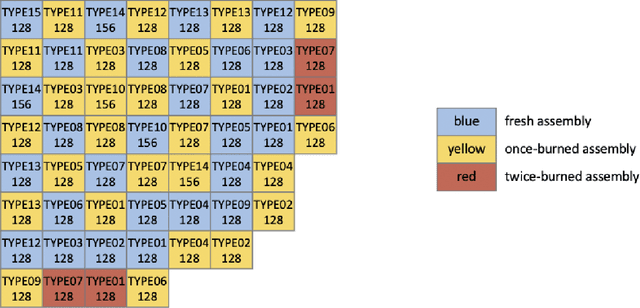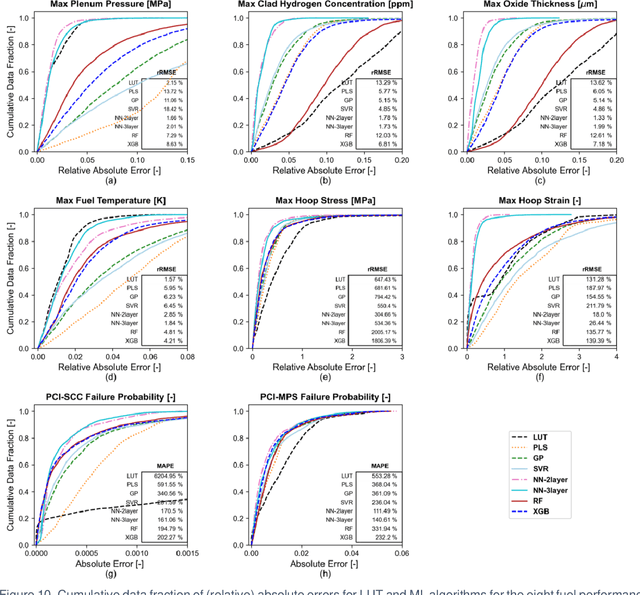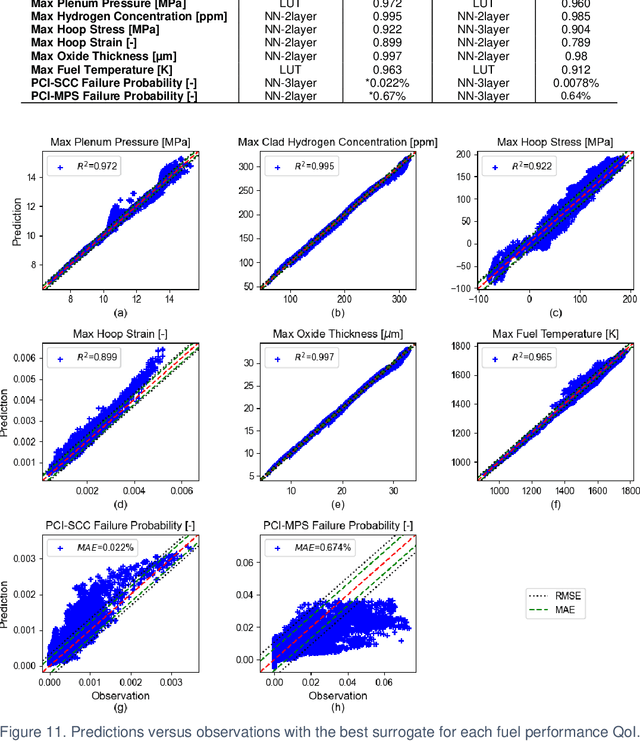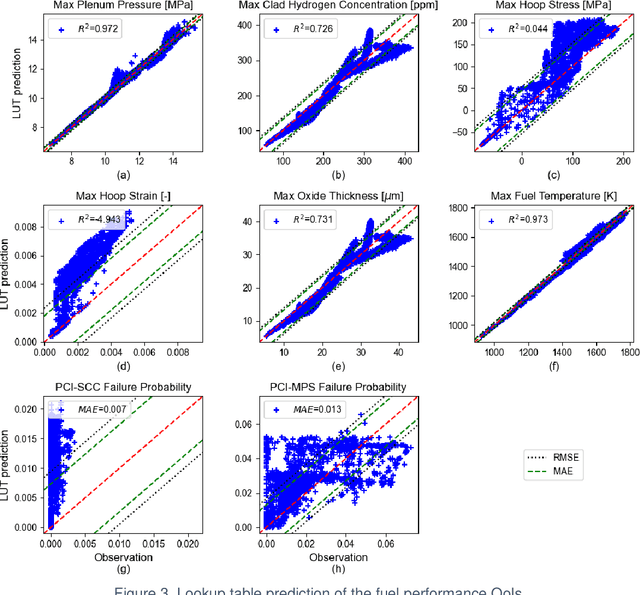Joseph Yurko
Machine learning-assisted surrogate construction for full-core fuel performance analysis
Apr 17, 2021



Abstract:Accurately predicting the behavior of a nuclear reactor requires multiphysics simulation of coupled neutronics, thermal-hydraulics and fuel thermo-mechanics. The fuel thermo-mechanical response provides essential information for operational limits and safety analysis. Traditionally, fuel performance analysis is performed standalone, using calculated spatial-temporal power distribution and thermal boundary conditions from the coupled neutronics-thermal-hydraulics simulation as input. Such one-way coupling is result of the high cost induced by the full-core fuel performance analysis, which provides more realistic and accurate prediction of the core-wide response than the "peak rod" analysis. It is therefore desirable to improve the computational efficiency of full-core fuel performance modeling by constructing fast-running surrogate, such that fuel performance modeling can be utilized in the core reload design optimization. This work presents methodologies for full-core surrogate construction based on several realistic equilibrium PWR core designs. As a fast and conventional approach, look-up tables are only effective for certain fuel performance quantities of interest (QoIs). Several representative machine-learning algorithms are introduced to capture the complicated physics for other fuel performance QoIs. Rule-based model is useful as a feature extraction technique to account for the spatial-temporal complexity of operating conditions. Constructed surrogates achieve at least ten thousand time acceleration with satisfying prediction accuracy. Current work lays foundation for tighter coupling of fuel performance modeling into the core design optimization framework. It also sets stage for full-core fuel performance analysis with BISON where the computational cost becomes more burdensome.
 Add to Chrome
Add to Chrome Add to Firefox
Add to Firefox Add to Edge
Add to Edge